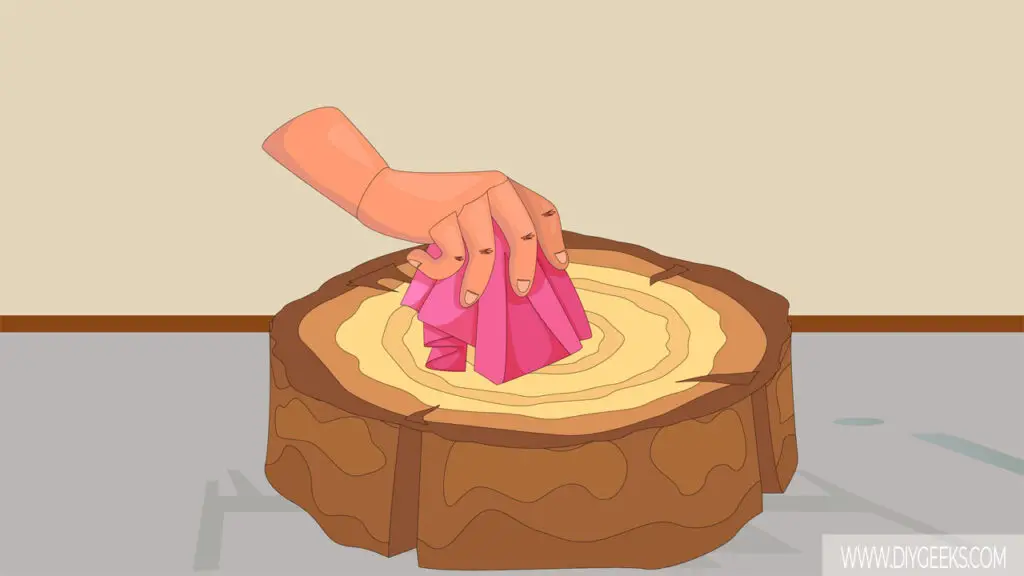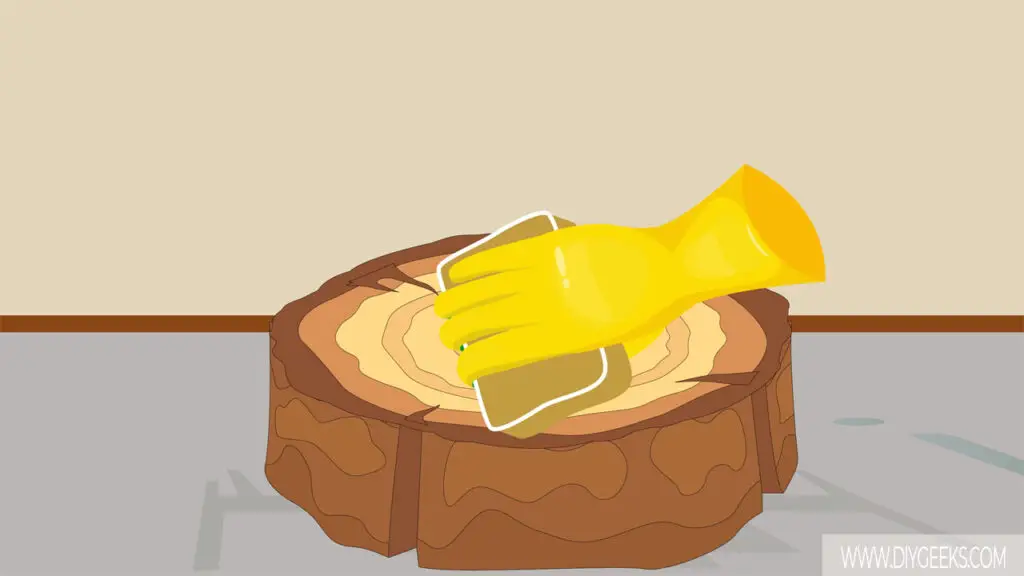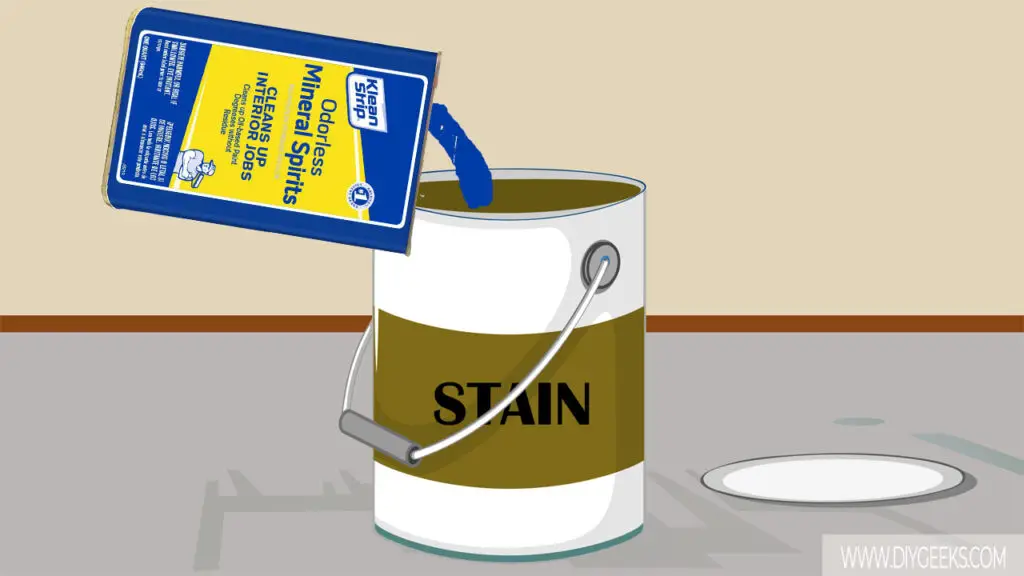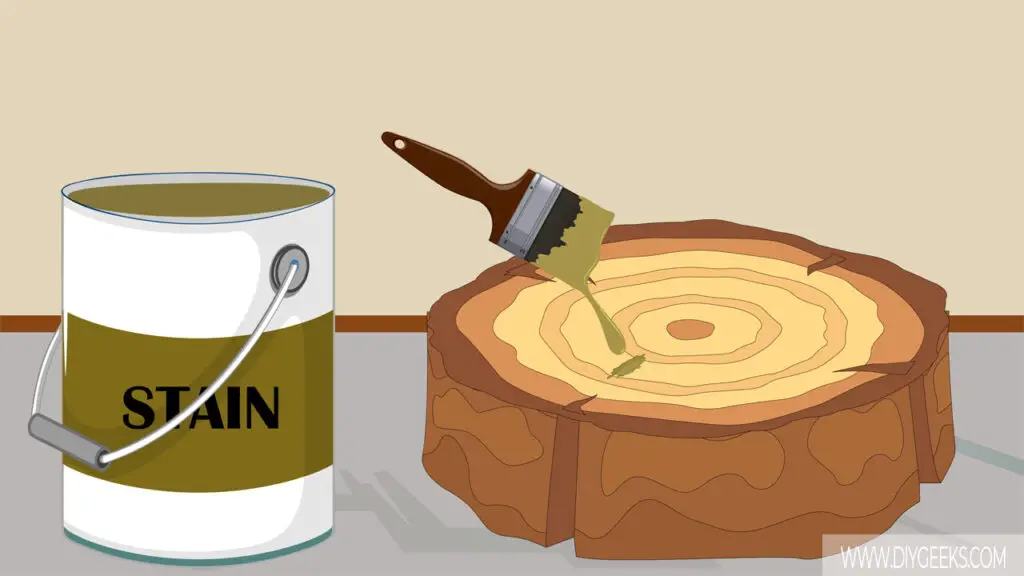Acacia wood is a hardwood type known for its durability, hardness, versatility, and grain patterns. Staining acacia wood is easy if you properly prep the surface by sanding and raising its wood grain.
To stain acacia wood, clean the surface, prep the wood, thin wood stain, apply wood stain, and seal the finish.
Is Staining Acacia Wood Easy?
Staining acacia wood is easy if you properly prep the surface and use the right stain types. Acacia wood isn’t as porous as other hardwood types as it doesn’t accept wood evenly.
You must prep the wood by sanding it with fine-grit sandpaper (220-grit) to open its pores so it can accept wood stain evenly. You don’t need to apply a washcoat (or sanding sealer) as it can prevent proper wood stain absorption.
How to Stain Acacia Wood?
To stain acacia wood, do the following things.
- Clean the Surface.
- Prep the Wood.
- Thin Wood Stain.
- Apply Wood Stain.
- Seal the Finish.
The tools you need for this project are listed below.
- Medium 150-grit sandpaper and fine 220-grit sandpaper
- Drop sheet
- Wood sealer (or topcoat)
- Portable vacuum
- Plastic putty knife
- Painter’s tape
- Rags
- A bowl of water
- A wood stain of your choice. For this guide, we are using linseed oil
- Mineral spirits (If you are using an oil-based wood stain)
- Paint mixer (optional)
- Painting Equipment.
1. Clean the Surface

Clean the acacia wood surface with a dry rag to remove dust, dirt, or debris that can prevent the wood stain from penetrating and adhering to it.
2. Prep the Wood

Prep the acacia wood by sanding it with fine-grit sandpaper (220-grit). If the wooden surface is riddled with too many imperfections, use medium-grit sandpaper (100-grit) to sand it.
The sandpaper removes the imperfections, opens the wood pores, evens out the surface, and makes it paint-ready.
Since acacia wood doesn’t accept wood stain well, raise its wood grain so the stain can soak into the surface pores.
To raise the acacia wood grain, do the following things.
- Dip a rag into a water bowl, squeeze it, and wipe the entire wooden surface.
- Wait around one (1) hour.
- The water penetrates the wood grain, causing the wood fibers to rise and leave gaps.
- Once the surface grain is raised, the surface is ready for staining.
3. Thin Wood Stain

You must thin oil-based wood as it’s too thick for acacia wood pores. Thinning dilutes the wood stain viscosity, allowing it to easily penetrate smaller pores.
To thin oil-based wood stain, use mineral spirits in a ratio of 4:1 (4 parts stain to 1 part thinner). Simply mix the stain and mineral spirits in a clean bucket for around 5-10 minutes, and use the mixture over the wood.
4. Apply Wood Stain

Apply two (2) wood stain coats over acacia wood using a clean tack cloth. Ensure to gently massage the wood stain over the surface in a circular motion. Wait until the first stain coat dries, wipe the excess, and apply the second coat.
5. Seal the Finish

Seal the acacia wood and the wood stain finish with polyurethane or varnish to protect them from moisture, water, scratches, and weather elements.
Sealers create a transparent moisture-resistant layer that protects the surface without affecting the existing finish color shade.
Which Wood Stain Type To Use Over Acacia Wood?
The wood stain types to use over acacia wood are listed below.
- Oil-based Wood Stain: It works great for acacia wood as it creates a glossy finish that highlights the wood’s natural grain. However, you must thin it before application as it’s too thick.
- Water-based Wood Stain: It creates a flat or satin finish over the surface and enhances the wood appearance, dries fast, and you don’t need to thin it.
- Gel Stain: It has a gelly-like thick viscosity that enhances the wood appearance by highlighting the patterns and texture, and protects the surface from low water or moisture amounts.
Don’t use lacquer wood stain over acacia wood as the stain dries too fast and doesn’t penetrate the surface pores properly.
What Wood Stain Color To Use Over Acacia Wood?
The wood stain color you can use depends on the acacia wood color. Popular acacia wood colors are reddish brown, rich dark brown, and golden brown
Light wood stain colors include golden oak, honey tone, and maple. Dark wood stain colors include Walnut, Espresso, and Ebony wood stain.
How to Make Stained Acacia Wood Darker?
To stain acacia wood darker, do the following things.
- Wipe the wooden surface with a clean tack cloth to remove dust and debris that may have settled on the wood.
- Sand the wooden surface with ultra fine-grit sandpaper (440-grit) and vacuum off dust.
- Apply more wood stain on the Acacia wood and wait around 10 minutes. The longer you leave the wood stain on the surface, the darker the finish will be.
- Wipe off the excess wood stain and leave it to dry.
How to Make Stained Acacia Wood Lighter?
To make stained acacia wood lighter, do the following things.
- Use Wood Bleach.
- Use Sandpaper.
1. Use Wood Bleach
Pour wood bleach over the stained wood with a rag and wait around 10 minutes. The wood bleach will make the finish appear lighter. Pour white vinegar mixed with warm water to remove the wood bleach residue and inspect the finish.
2. Use Sandpaper
To lighten a stained wood finish, use ultra fine-grit sandpaper (440-grit) or 0000-grade steel wood. The sandpaper or steel wool will remove the stain finish, making it appear lighter.
FAQS
Is Staining Acacia Wood Easier Than Staining Oak Wood?
Staining acacia wood isn’t easier than staining Oak wood as Oak wood is more porous and absorbs stains better.
How Long Does Stain Last Over Acacia Wood?
Wood stain lasts between 12-18 months over Acacia wood when applied correctly. The finish lasts longer if you seal the wood stain with a protective topcoat.
Can You Re-Stain Acacia Wood If They Are Already Stained?
You can re-stain acacia wood if it’s already stained, but you must prep the surface properly. Since acacia wood isn’t porous, it can’t accept too much wood stain so you must remove the existing finish first.
What Is the Natural Color of Acacia Wood?
The Acacia wood’s natural color ranges from yellow to golden brown because there are several species of it. The wood develops a deeper shade over time due to weathering effects.


